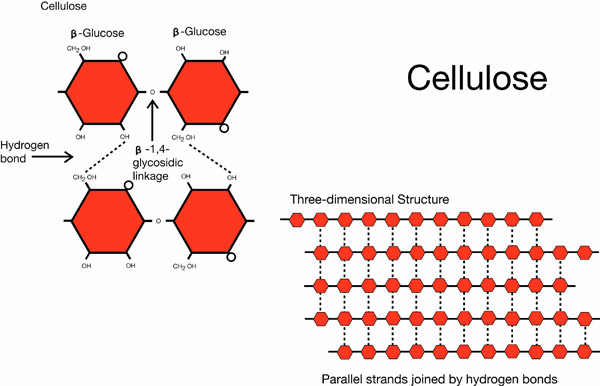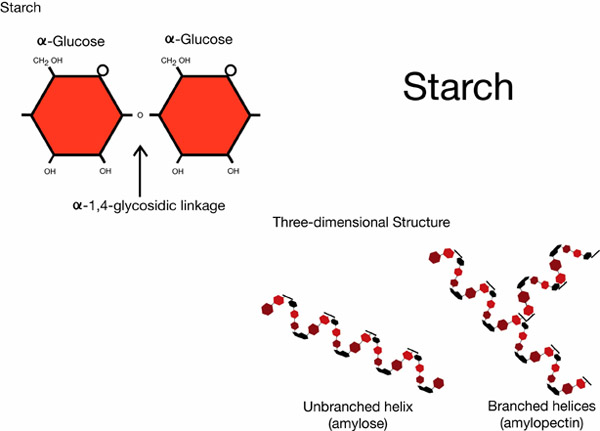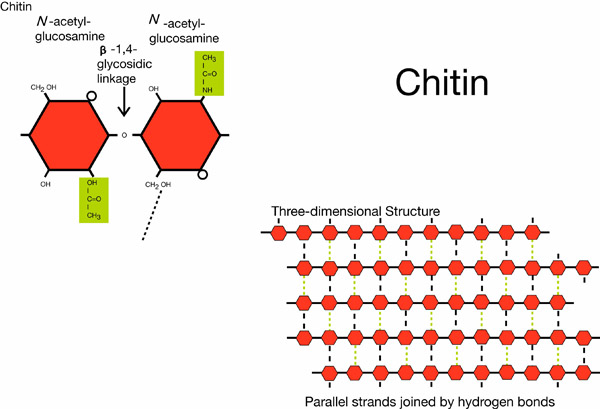 username@email.com
username@email.com
In this lesson, you will review organic molecules and their
functional groups. This lesson specifically discusses carbohydrates and their important functions within living things.
All matter is composed of atoms of elements. The electrons in atoms form bonds with those of other atoms to form molecules. Energy is stored in the bonds of molecules. Scientists think that living things might have evolved from complex molecules formed from chemical reactions occurring within the early oceans of earth. Living things are composed primarily of organic molecules and water.
Organic molecules are those that have a carbon skeleton. In most living systems, the carbon skeleton has hydrogen and/or other functional groups attaged to create a wide variety of compounds. Becuase carbon has four valence electrons, it tends to form covalent bonds with up to four atoms. The energy used by living things is stored in the covalent bonds of organic compounds.
Hydrocarbons or alkyls are the simplest organic compounds, containing only carbon and hydrogen. Alkanes are saturated hydrocarbons, meaning there are no carbon double bonds present. Methane is an example of an alkane. Alkenes are characterized by having a double bond; they are unsaturated hydrocarbons. The degree of saturation of a hydrocarbon influences its reactivity and shape.
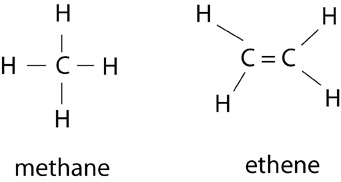
| Methyl Group | |
|
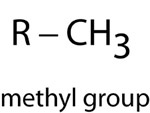 |
| Ether Group | |
|
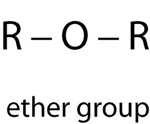 |
| Hydroxyl Group | |
|
 |
| Phenols | |
|
 |
| Sulfhydryl Group | |
|
 |
| Carbonyl Group | |
|
 |
| Aldehydes | |
|
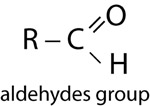 |
| Ketones | |
|
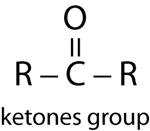 |
| Carboxyl Group | |
|
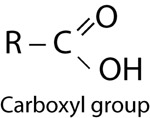 |
| Esters | |
|
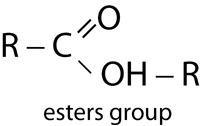 |
| Amine Group | |
|
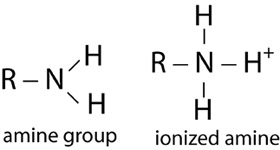 |
| Phosphate Group | |
|
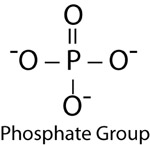 |
Complex organic macromolecules called polymers are formed from simple organic monomers. Living things are composed primarily of only four kinds of organic polymers: carbohydrates, lipids, proteins, and nucleic acids. Each type of macromolecule is made of distinctive organic monomers. Organic monomers undergo dehydration synthesis (also called condensation reactions) to produce complex polymers. In condensation reactions, one monomer loses an H atom and the other loses an OH atom when a new bond is formed, and water (H2O) is produced. In the opposite reaction, called hydrolysis, polymers are broken down into monomer subunits by adding water.
The monomers of carbohydrates are called monosaccharides. They produce polymers by forming glycosidic bonds. There are several classes of carbohydrates, which will be discussed in detail later.
Lipids typically contain long fatty acid chains and are non-polar and water insoluble. Fats like triglycerides and oils are lipids composed of glycerol bonded to fatty acid chains. Other lipids, such as steroids, contain distinctive ring structures.
Proteins have several levels of structure, but all proteins are composed of amino acid monomers joined by peptide bonds in dehydration synthesis reactions. Proteins are very important in controlling metabolism in their action as enzymes.
The monomers of the nucleic acids DNA and RNA are called nucleotides. Nucleotides form phosphodiester bonds in dehydration synthesis reactions to form the DNA backbone. Another important nucleotide in all living things is called adenosine triphosphate (ATP).
ATP is a very important molecule in living things. It is often called the energy currency of the cell. It is composed of a pentose sugar called ribose, an amine called adenine, and three phosphate groups. The line of phosphates contains very high-energy bonds that are easily broken. Energy is transferred by dehydration synthesis reactions by making and breaking high-energy bonds in ATP.
Examples of dehydration synthesis reactions for three of the four main classes of organic macromolecules are shown below.


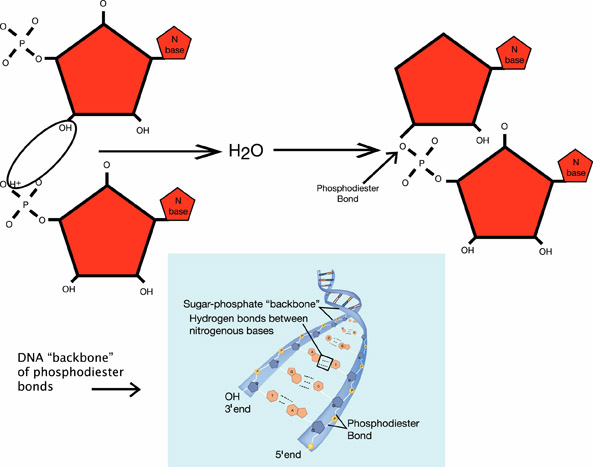
Hydrolysis reactions for each type of macromolecule are the opposite process of that shown above. In hydrolysis, water is split by hydrolytic enzymes, breaking it into an H atom and an OH group. These react to form simple monomers when the molecular bonds of the polymer are broken.
What is formed by the dehydration synthesis of sucrose?
The correct answer is C. Dehydration synthesis builds complex molecules from simple ones, and water is produced as a by-product.
Carbohydrates are important sources of quick energy. The energy used by cells is released from the bonds of simple carbohydrates such as glucose. Carbohydrates also function in energy storage as starch and glycogen, and as important structural elements, particularly in plants, fungi, and arthropods.
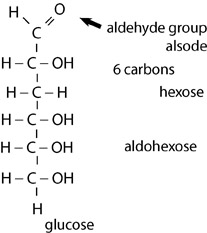
Monosaccharides often exist as isomers. Isomers are molecules with the same chemical formula and often the same kinds of bonds between atoms, but in which the atoms are arranged differently. Glucose, for example, can have as many as sixteen different configurations of atoms. Various isomers of glucose are named according to location of functional groups. Unique isomers of simple carbohydrates are involved in many important metabolic pathways.
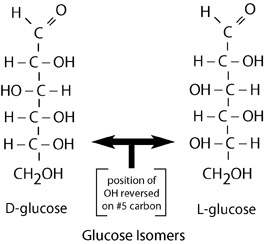
An oligosaccharide is a more complex carbohydrate composed of two to ten monosaccharide subunits. A disaccharide is an oligosaccharide composed of two monosaccharides, such as the sucrose molecule shown in the dehydration synthesis reaction for carbohydrates. Polysaccharides are very complex, composed of more than 10 monosaccharides. Cellulose, starch, glycogen, and chitin are all biologically important polysaccharides.
Cellulose is the most abundant polymer on earth. If you are wearing cotton, you are wearing cellulose. The fruits and vegetables you eat are rich in cellulose. If you are sitting on a wooden chair, you are sitting on cellulose, and if you are taking notes, you are writing on cellulose. Cellulose is the primary structural component of plant cell walls. Cellulose monomers are linked together through 1,4 glycosidic bonds in a straight chain. In cellulose microfibrils, hydroxide groups in the monomers hydrogen bond with each other, holding the chains firmly together creating a lattice structure. This gives cellulose fibers high tensile strength. In plant cell walls, cellulose forms a matrix with hemicellulose and lignin to give plants support.
